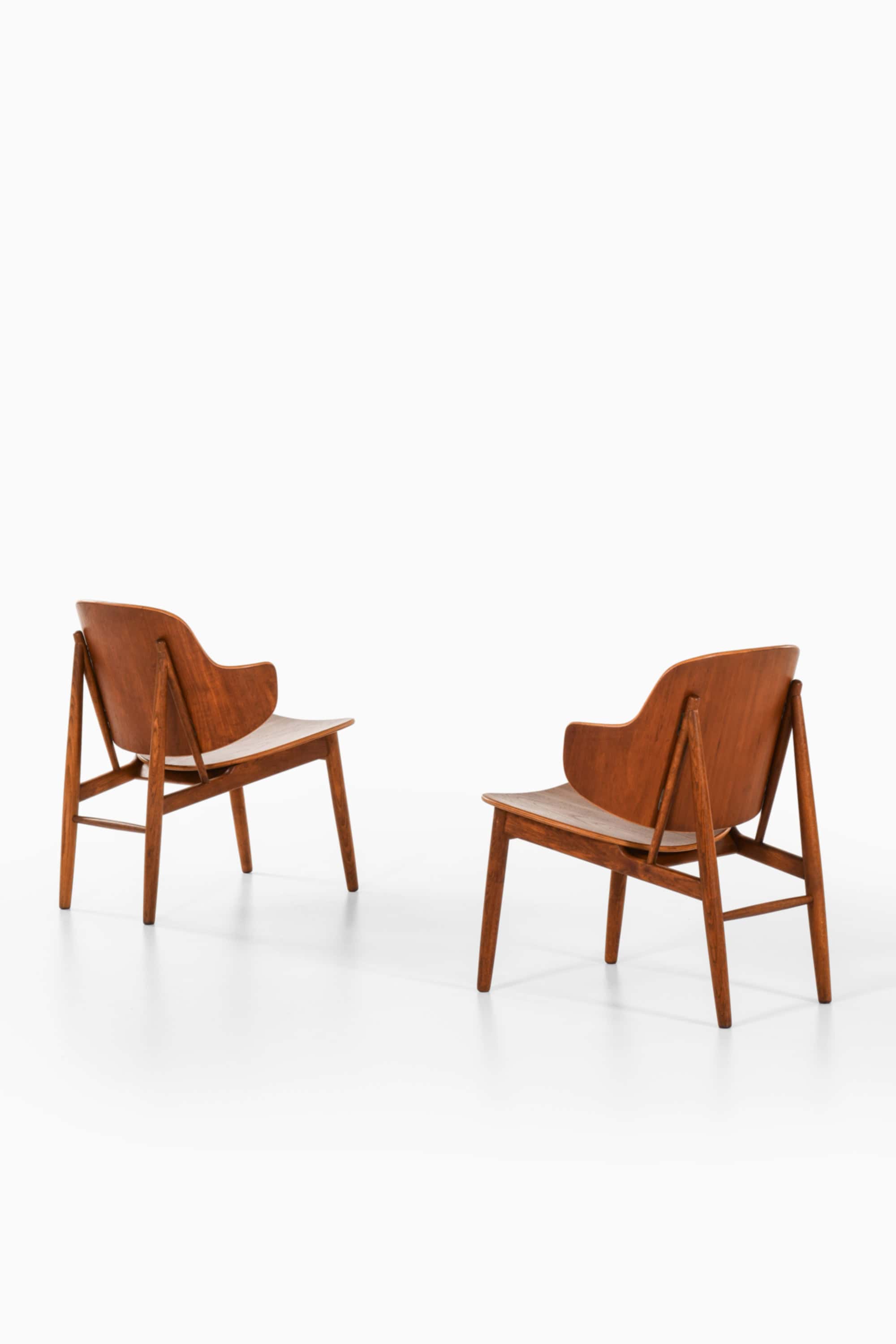
Ib Kofod-Larsen
Ib Kofod-Larsen (1921–2003) was a Danish furniture designer celebrated for his sculptural seating, refined joinery, and luxurious material combinations. Though lesser-known than some of his contemporaries during his lifetime, Kofod-Larsen’s reputation has grown significantly in recent decades. His designs are now regarded as some of the finest examples of Danish modernism, particularly for their elegant forms and deep comfort.
Kofod-Larsen studied at the Royal Danish Academy of Fine Arts in Copenhagen, where he trained as an architect. He quickly moved into furniture design in the 1940s and 50s, creating a prolific output that spanned armchairs, sofas, tables, and storage furniture. From early on, he exhibited a distinctive design language—organic yet disciplined, minimal yet rich in tactile appeal.
A key characteristic of Kofod-Larsen's work is his sensitivity to both material and form. He frequently used high-quality woods such as teak, rosewood, oak, and walnut, paired with leather or wool upholstery, often on curvaceous, cantilevered frames that invited both admiration and comfort. His forms are fluid and sculptural, often marked by refined details like bevelled edges, gently tapering legs, or elegantly framed armrests.
Notable designs by Kofod-Larsen include:
- The Elizabeth Chair (ca. 1956) – named after Queen Elizabeth II, who reportedly purchased a pair during a visit to Denmark. This iconic lounge chair features a low, wide stance with a luxurious, sculptural wooden frame.
- Penguin Chair (early 1950s) – a compact, modernist design with a curved seat and backrest in veneered plywood or upholstered fabric, mounted on slender metal legs.
- Seal Chair (Sälen) – a lounge chair produced by O.P. Rykken in Norway, exemplifying his elegant use of proportion and upholstery.
- U-56 Chair – produced by Christensen & Larsen, often considered one of his most graceful and technically resolved lounge designs.
While Kofod-Larsen produced furniture for Danish companies such as Christensen & Larsen, Faarup Møbelfabrik, and Säffle Möbelfabrik, he also had substantial international collaborations, particularly in the United States, United Kingdom, and Sweden. For example:
- He worked with G-Plan in the UK on the Danish Line, which brought Scandinavian design to British consumers in the 1960s.
- He designed for High Wycombe-based companies such as Selig and Howard Keith in the US, contributing to the transatlantic popularity of Danish modern furniture.
Kofod-Larsen's furniture was widely exhibited throughout Scandinavia and Europe during the 1950s–70s, particularly at events like the Copenhagen Cabinetmakers’ Guild Exhibitions (Snedkerlauget), which served as a national showcase for Danish furniture innovation. His works were also featured in design magazines and catalogues internationally, often praised for their sculptural elegance and modern yet timeless character.
Despite not receiving the same high-profile awards as designers like Hans Wegner or Arne Jacobsen during his lifetime, Kofod-Larsen’s work was quietly influential and well-regarded within the design community. In recent years, he has been rediscovered by collectors and historians, with original pieces now fetching high prices at design auctions and being reissued by leading contemporary manufacturers such as Menu and Karakter Copenhagen.
Kofod-Larsen died in 2003, but his body of work continues to resonate for its understated sophistication, attention to form, and commitment to quality. His chairs, in particular, are now viewed as icons of Danish design and are frequently included in design museum exhibitions and retrospectives focusing on Scandinavian mid-century furniture.


Ib Kofod-Larsen easy chairs
(2 PCS)
Ib Kofod-Larsen easy chairs
(3 PCS)
Ib Kofod-Larsen armchair

Ib Kofod-Larsen easy chair

Ib Kofod-Larsen easy chairs

Ib Kofod-Larsen sofa

Ib Kofod-Larsen easy chair

Ib Kofod-Larsen easy chair

Ib Kofod-Larsen easy chairs
